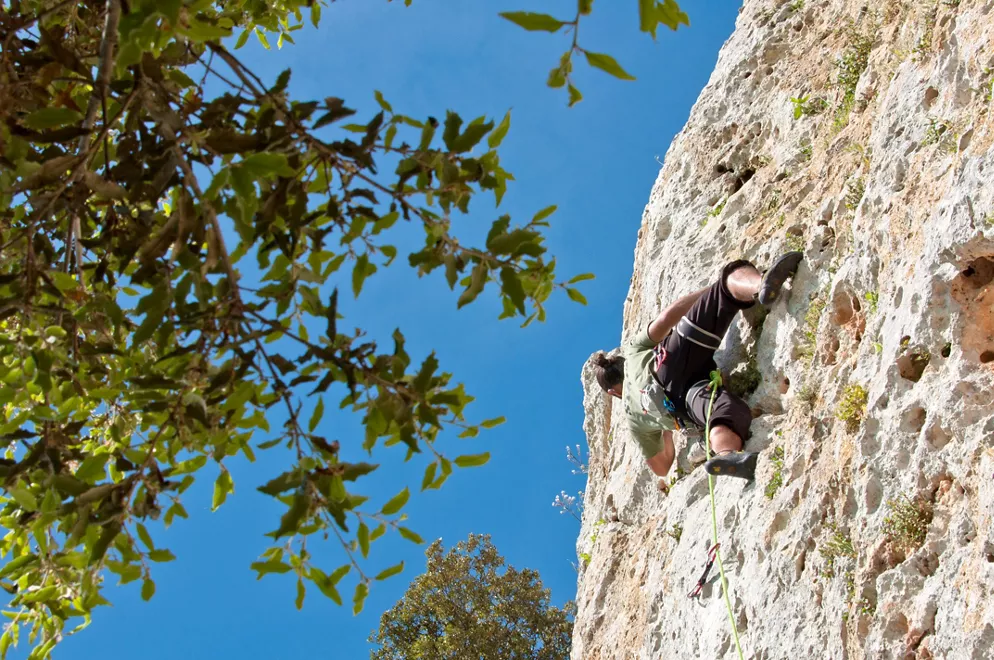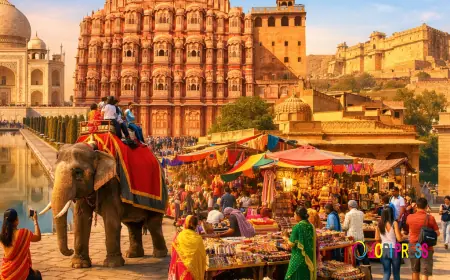Rock Climbing in Italy: Best Spots from Dolomites to Sicily

Italy is not only a land of rich culture, ancient cities, and mouth-watering cuisine—it’s also a haven for adventure enthusiasts. One of the most thrilling experiences the country offers is rock climbing in Italy, with routes that stretch from the snow-dusted peaks of the Dolomites to the sun-kissed cliffs of Sicily. Whether you're a beginner looking for scenic views or a seasoned climber chasing challenging ascents, Italy caters to all levels with a wide range of climbing destinations.
For travelers seeking an adventurous twist to their holiday, you can easily combine climbing with sightseeing through Europe tour packages, many of which include time in Italy's top climbing regions. So pack your climbing gear—Italy awaits with routes as diverse as its history.
The Dolomites: Italy’s Crown Jewel for Climbers
No guide to rock climbing in Italy would be complete without highlighting the Dolomites. Located in the northern region of Trentino-Alto Adige, this UNESCO World Heritage site offers some of the most iconic and dramatic limestone formations in Europe.
The climbing routes here range from short sport climbs to multi-pitch alpine routes. Classics like the Tre Cime di Lavaredo and the Marmolada massif are perfect for climbers looking to test their skills on long, scenic climbs with unforgettable backdrops. The area is best visited from June to September, when conditions are favorable and most mountain huts (rifugi) are open.
For beginners, areas like Cinque Torri near Cortina d'Ampezzo provide easier climbs in a beautiful setting, making it a great starting point.
Arco and Lake Garda: Sport Climbing Paradise
Nestled on the northern edge of Lake Garda, Arco is Italy’s sport climbing capital. Its mild climate, year-round climbing potential, and hundreds of bolted routes make it popular with climbers from around the world. The limestone cliffs are highly accessible, and the variety ensures there’s something for every skill level.
Arco is also known for hosting the Rock Master Festival, a prestigious climbing competition that draws global attention. After a day on the rocks, you can relax by the lake, explore nearby castles, or enjoy authentic Trentino cuisine.
Ligurian Coast: Climbing with a View
Imagine climbing with the sea breeze on your face and the sound of waves below you. That’s exactly what you get on the Ligurian coast, especially in the Finale Ligure region. Located near Genoa, this area offers an incredible mix of seaside cliffs and inland crags.
Finale Ligure is famous for its compact limestone and over 1,000 routes spread across various sectors. The area is particularly popular in spring and fall, offering warm conditions and a relaxed Mediterranean vibe. Many climbers combine their adventures here with exploration of coastal villages or sampling local seafood delicacies.
This region
provides a wonderful contrast to city-based travel and is a must-visit if you're including northern Italy in your Europe tour packages.
Central Italy: Hidden Gems in Lazio and Tuscany
Central Italy isn’t always top of mind for climbers, but it has plenty to offer. In Lazio, just outside of Rome, you'll find countless crags in areas like Sperlonga, Grotti, and Monte Guadagnolo. These spots are perfect for a quick climbing day trip from the capital.
In between climbing sessions, don’t forget to explore the Eternal City. There are plenty of things to do in Rome beyond history and architecture—like visiting offbeat districts such as Trastevere or taking in panoramic views from Janiculum Hill.
Meanwhile, Tuscany, with its rolling hills and artistic heritage, also has its own climbing charm. The Alpi Apuane mountains near Lucca offer limestone walls and panoramic views of both the inland countryside and the sea. Rock climbing here can be a serene escape from the tourist crowds.
Southern Italy: Campania and Basilicata
As you travel south, climbing gets even more adventurous and less crowded. In Campania, the Amalfi Coast isn’t just for romantic getaways—spots like Positano and Furore offer scenic sport climbing with the Tyrrhenian Sea as your backdrop.
Further inland, the region of Basilicata is home to crags around Matera and the Lucanian Dolomites. The unique rock formations here offer technical routes with fewer tourists, making it ideal for climbers seeking solitude and challenge.
These regions are often included in offbeat Europe tour packages, especially for travelers wanting a deeper dive into Italy’s natural beauty.
Sicily: Sun, Sea, and Vertical Walls
Sicily, Italy’s largest island, is a rock climber’s paradise with its year-round sunshine, beautiful beaches, and diverse climbing terrain. The crown jewel is San Vito Lo Capo, located in the northwest. It offers over 1,000 bolted sport routes, many of which are seaside climbs with postcard-perfect views.
The rock here is high-quality limestone, and the approach is often just a few minutes’ walk from town, making it incredibly convenient. The Sicily Rock Climbing Festival held annually here draws climbers from all over Europe.
Other notable areas include Palermo’s Monte Pellegrino and the inland gorges of the Hyblaean Mountains. When you’re not climbing, you can indulge in Sicilian cuisine, explore historic ruins, or relax on golden beaches.
Tips for Climbing in Italy
-
Best time to visit: Spring (April–June) and fall (September–October) are ideal for most regions. The Dolomites are best in summer.
-
Gear: Sport climbing gear (rope, harness, quickdraws, helmet) is essential. Helmets are highly recommended in alpine and sea cliff regions due to loose rock.
-
Language: English is spoken in many climbing hubs, but learning a few Italian phrases can go a long way.
-
Local ethics: Respect the environment, follow local bolting ethics, and support local businesses.
Conclusion
From the alpine routes of the Dolomites to the sun-drenched cliffs of Sicily, rock climbing in Italy is a journey through some of the most stunning landscapes in Europe. Whether you’re chasing vertical thrills or combining culture with adventure, there’s a climbing destination to suit your travel style.
Don’t just stop at the climbs—immerse yourself in Italian life, enjoy the food, and explore beyond the cliffs. Climbing here is more than a sport; it’s a cultural experience. As you plan your trip, consider combining your climbing adventure with other things to do in Rome or coastal exploration in Liguria and Campania.
What's Your Reaction?
 Like
0
Like
0
 Dislike
0
Dislike
0
 Love
0
Love
0
 Funny
0
Funny
0
 Angry
0
Angry
0
 Sad
0
Sad
0
 Wow
0
Wow
0
















































